A Note to Readers: The following contains descriptions of events that have played out over True Detective’s eight-episode run and details on the finale. Read with caution if you are afraid of spoilers before having seen the entire season.
“It Happened Again on True Detective”
About six months ago the initial previews for True Detective boldly announced The McConaissaince was coming to TV, and just look at how gristly Woody Harrelson had become! It promised yet another slow-burning mystery…this one on the oilfield strewn and smokestack choked bayous of Louisiana (the cable network’s favorite homestead, seen also in True Blood and Treme). The big boys at HBO were gonna show the basic cable boobs behind The Killing and The Bridge how it should really be done. It all felt a little tired. We’d seen this before. And it was with a morbid curiosity that I tuned into the first episode.
The opening credits embraced the conventions with seductive glee. A creepy folksy tune titled “Far from Any Road” by the Handsome Family spun tales of a “poisoned Creole soul” and brooded over a graphic artist’s phantasmagoria of overlaid images, like a deadly serious realist flip side to the trashy-kitschy credits of the supernatural True Blood. It was stylish and admirable…but predictable…HBO shows are known for their innovative and signature opening credit sequences.
It wouldn’t be until later episodes that I realized the credits’ subliminal power. The image of a winding highway superimposed over Woody Harrelson’s face, in particular, was something that began to creep into my poisoned TV soul and became more unsettling every time I saw it.
The first episode, too, catered to the conventions. Two prickly opposites were partnered to solve the murder of a drug-addled prostitute named Dora Lange who was found with antlers on her head and other cultish mumbo-jumbo casting a pall over the scene. The story was presented in flashbacks as the elder versions of our detectives were questioned separately in 2012 about the case from the mid 1990’s hinting at something larger…a new copycat killer perhaps…and a current riff between the former partners. Episode One was slow…methodical…well acted…well directed…tinged with nihilism…yet where was it going and would anyone care once we got there?
Eight episodes. A complete story. An anthology series in the style of American Horror Story – a title that could’ve easily been used here. True Detective, unlike Twin Peaks and The Killing before it, promised completion…no long drawn-out anti-climax stretched over multiple seasons. The approach was like that of an eight-hour film with one director, Cary Joji Fukunaga (the mastermind behind two stylistically disparate but equally compelling films, Sin Nombre and Jane Eyre), who armed with the scripts from under-the-radar novelist Nic Pizzolatto created a consistent and quietly thrilling tone. So I stay tuned in…and slowly but surely I became addicted. The communal fervor for the show bloomed along with my obsession.
In this day and age of binge watching and Netflix, it’s rare to hear on a Monday morning people at work buzzing in cubicles and through emails about what they watched Sunday night. Articles began to appear on blogs about Pizzolatto’s literary influences and the inspiration for the nefarious Yellow King (which admittedly diminished some of the mysterious allure around what the hell was going on in this show). People clamored for the metaphysical in the gritty realistic abyss looking back at them from the TV screen. Theories on who the real serial killer was quickly divided into three predictable camps: It was Marty Hart (Woody Harrelson), it was Rust Cohle (Matthew McConaughey) or it was Reverend Tuttle (a religious leader people suspected might be heading up a ritual abuse and murder cult). Pizzolatto and Fukunaga cleverly, like the master storytellers they emulated, provided clues and hints all along the way, teasing and pleasing the audience who knew the ropes with which to hang themselves all too well.
Yet it was the fourth episode, after three hours of forecasted slow-burning, where True Detective suddenly announced itself as the true heir to Twin Peaks inaugural season (not coincidentally also made up of 8 hours with its two-hour pilot and subsequent six hours leading to a classic cliffhanger). Here in Episode Four, Rust Cohle went rogue, tapping into his undercover narcotic division days, and infiltrated a blisteringly puss-filled biker gang thought to have ties to their numero-uno suspect through some meth dealing. It briefly brought to mind the episode of Twin Peaks where Agent Cooper went undercover at the Canadian brothel/gambling joint, One-Eyed Jacks, looking for Laura Palmer’s killer. Whereas Twin Peaks was playing with the conventions of the trashy cliffhanger-obsessed nighttime soaps of the 1980’s, True Detective was playing with the conventions of every dour detective opus that has come down the pike in the past twenty-five years in the shadow of Twin Peaks.
Culminating with Fukunaga’s brilliantly orchestrated and crisply photographed six-minute one-take tracking shot detailing Cohle’s escape from a botched raid in a gun-crazy ghetto, Episode Four left me dazzled and pumped up with adrenaline leading to a sleepless night no TV show has given me in many moons. It was a game changer. This episode was for True Detective what the first “dancing midget” episode was for Twin Peaks. It was like nothing we had ever experienced on TV and that tracking shot (not unlike Cooper’s dream sequence in the Red Room) was something that belonged to cinema…to art. This True Detective…awash in pulpy neo-noir, TV murder mystery, gritty cop show conventions…was actually something different…unhinged…and now suddenly unpredictable.
I was tempted to craft a post praising the show after Episode Four, but I knew deep down I had to wait. I had to see where this was going before I truly knew what I thought about it. After all, as advertised, it promised completion in eight episodes. As much as I and other viewers pretended to know what this all was about…I had a feeling we wouldn’t truly know until it was all over. So I waited and watched the next episodes with bated breath as Pizzolatto and Fukunaga worked their acting marionettes into a soul-searching tizzy with Cohle waxing eerily about life being a flat circle where the abused children they rescued after catching (and disposing of) the vile scumbags thought to be behind Dora Lange’s killing would always be in that dark room waiting to die or be saved. Salvation is relative, of course, as the little boy was already dead and the little girl left a catatonic mess. This would happen again…and again…Cohle mused in a dirge-like echo of the Twin Peaks’ Giant Man from Another Place announcing to Cooper in a vision that “It is happening again” while poor Maddie was being brutalized and killed by her own uncle…Laura Palmer’s father.
In Episode Six of True Detective, the little girl from that dark room, now a teen-ager imprisoned in a mental hospital, briefly exited her catatonic state while being questioned by Cohle to echo that echo…describing a giant man with a scar on his face being the worst of all of her captors…the biggest monster. If Twin Peaks’ revelation of Laura Palmer’s killer was the loss of innocence for my generation (I was but a tween when that gave me real-time nightmares), True Detective relies on its adult audience’s deep knowledge of the modern macabre when no one bothers to describes the graphic details of what happened to the children in the dark room. One need not speak of the tragedy. We’re all too well-versed in man’s capacity for violence and sadism. We can casually imagine it ourselves and cringe with equal parts guilt, shame and horror. Indeed it has happened before. Still, after these episodes, I knew not where True Detective would ultimately lead. Is it even possible to repeat a loss of innocence?
Because…
As dark as it all is, True Detective is not without humor. Marty’s facial reactions and one-liners in reaction to Rust’s dire diatribes are priceless. At one point he classically referred to Rust in 1995 as “the Michael Jordan of being a sonuvabitch” and then tells him plainly in 2012, “If you were drowning, I’d throw you a fucking barbell.” Early in the series the soon-to-be-referred-to-as Yellow King was described by a child as a “green-eared spaghetti monster” when she mistook his facials scars for unruly pasta…marking this as perhaps the first time pop culture took a jab at Pastafarianism.
Over the course of Episodes Six and Seven the show continued to bounce back and forth from 1995 to 2002 before finally resting in 2012. Layers of the onion continued to peel revealing Marty’s perverse “man code” that defined the women and children he tried to own through protecting. Meanwhile Rust continued to teeter dangerously around the outward circle of Nietzsche’s abyss, apparently disappearing for eight years before showing back up in town drunk, haggard and hell-bent on exposing Tuttle and the sprawl of the virulent conspiracy to cover up the ritualistic abuse of women and children in the bayou’s forgotten outposts. At times the ultimate revelations seemed like they would sidle more closely with the BBC’s similarly themed but more ensemble-driven and headline-ripping Red Riding Trilogy than with the timeless spiritual madness of Twin Peaks. Separated by rage in jealousy in 2002, the partners reunited (with Marty reluctantly so) in 2012 in Episode Seven to finally bring the long torturing case defining their lives to a close…or so they hoped. Would our heroes ever find their mythical Yellow King and reach Carcosa? Maybe we’re all the Yellow King and Carcosa is everywhere?
The final hour arrived, and contained therein was a suspense riddled thirty minutes where thespians Glenn Fleshler and Ann Dowd showed up on their sprawling Creole ranch of horrors to scare the living bejeesus out of us. As Marty and Rust descend upon the place (after Marty’s keen detective skills unearth the secret behind the green ears), Fukunaga rewrites the language of terror for the small screen. You see, the biggest twist of all is that Carcosa is an actual place…an abandoned brick and tunnel monstrosity strewn with bloodied clothes, bones and all those cultish accoutrement, a sprawling pit that Rust nearly gets lost in, guided only by the voice of the real flesh and blood Yellow King. At one moment he has a vision staring up through a hole in the ground and sees the cosmos spinning above come tumbling down into the darkness with him. In the next moments, the show takes on the vibe of clichéd fright fest where the killer…and our heroes…just won’t die…until it looks like they all do. But they don’t.
Marty and Rust save each other, but not before taking some nearly deadly blows from the ax-wielding hand of the Yellow King. The show’s final ten minutes feature languid Badalamenti-esque music over long panning shots of hospital hallways and the now seemingly peaceful bayou (in a final nod to Twin Peaks) and philosophical closing thoughts where Rust sees the light after an emotional breakdown in front of Marty. There was something oddly romantic about it all…the light at the end of the darkness…as clichéd as it was. Instead of leaving our heads spinning and lost in the darkness, Pizzolatto and Fukunaga deliver on their promise to leave the story fully closed…and the kinder viewers fully satisfied.
Perhaps when the show’s theme song mentioned “the poisoned Creole soul” it wasn’t meant to be taken literally. Maybe the Creole soul refers to the darkness and light battling inside all of us. If Leland Palmer’s demonic alter-ego Killer Bob was indeed, as one character mused on Twin Peaks, a metaphysical manifestation of “the evil that men do” then True Detective showed us the evil that good men sometimes have to do to fight the evil other men do.
Who knows what the next season will bring for this hopefully verdant anthology, but thanks to the artistically cohesive direction of Fukunaga coupled with Pizzolatto’s philosophically rich, psychologically complex and layered scripts that provided McConaughey and Harrelson the opportunity to act the living shit out of their roles, this first season of True Detective is destined to be a cultural and generational touchpoint in pop culture, quoted and debated for decades to come.
Written by David H. Schleicher

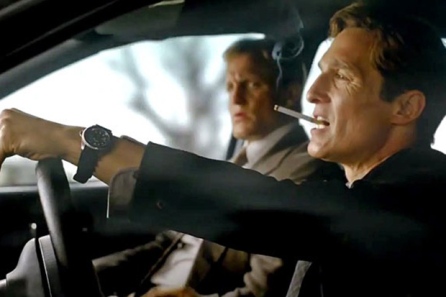
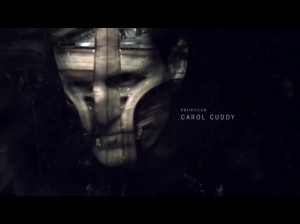
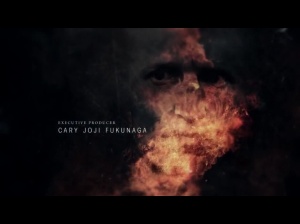
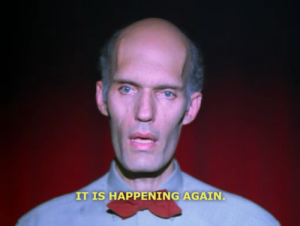
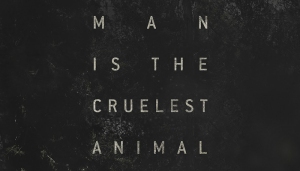
I stopped reading 1/4 of the way through. I watched 1 and 1/2 episodes and gave up. Slow and weird. But will try back again. If I read what happens in the end, I won’t go back and watch!
Dianne – there is a certain already famous tracking shot in Episode 4 and a philosophical final moment that I think you would appreciate…but if you weren’t able to get beyond the second episode…the payoffs might not be worth the journey for you.
Excellent review David.
I was very impressed with the overall show. At certain points, I thought the show was going to fall into the pitfall of other TV shows or even films dealing with serial killers, but that didn’t happen here. Like you mention, Episode 4 elevated the show to a new level. Rust’s dive back into the underbelly of crime was arresting stuff as was that now famous shot.
Very rare to see a TV show with a mesmerizing visual language. The landscape was a character in itself. The decision to shoot the show in 35mm seems like a really wise one. And I like how light and dark was reversed in the final episode. The opening of the final episode was in daylight and in a lush green space yet it was terrifying, horrifying. And instead, the night time at the end of the episode was calm and relaxing. The day was to be feared but night brought that much needed “the light at the end of the darkness” as you mention.
Season 2 could be something completely different. I read in an interview that the delibrate choice of the title allows for a larger scope of stories to be examined.
I totally credit Fukunaga for that mesmerizing visual language. This certainly solidifies his status as one of the “Next Great Directors”. I hope they stick with the “one director for the whole season” method going forward and give another young director a shot to leave his mark, though I heard that might be difficult due to scheduling.
I came on board half-heartedly only having seen one episode and now the Finale, and I must say this is definitely a very unique TV production, disturbing in revealing the ugliest of evils, audacious in exploring the internal and the dark chambers of man’s heart, and rightly so, the blurry line between good and evil. Yes, that one episode I saw, I forgot the #, but it’s about Rust being investigated by two men from Internal Affairs regarding misconduct on his part in solving crimes. (? wherein he punches flat a tin can, making a statement about the hole? the emptiness?) The darkness does not belong only to the villains, but the protagonists as well. The conflicts and ambivalence between the partners Rust and Marty, at times confrontational, at times bromantic, interesting portrayal. This last scene of the Finale says it all. Thanks for this heart-felt chronicle you’ve written up here.
Having seen just these two episodes, what boggles my mind is this question: What brought about the transformation of Matthew McConaughey? I think “Mud” could well be the turning point. I had never like his previous screen persona, therefore have not seen many of his older movies. Didn’t like the pretty boy, the happy-go-lucky, womanizer image. But could “Mud” be the major turning point? and if so, what made him change his ‘repertoire’? Since then, he has reinvented himself, transforming the light and the playful into a dark and deep character actor. And this shift in image and in substance was most effective in catapulting him to the Oscars. MM’s change is so dramatic that it deserves a film on its own. This time, exploring deep into the psyche of the interpreter of Rust. Considering MM is one of the producers of “True Detective”, looks like his transformation is complete indeed.
Arti – I actually think Killer Joe was the turning point for him – it’s where he essentially murdered that old “Sexiest Man Alive” persona by playing the most heartless despicable villain I’ve seen in quite some time. Mud is what solidified that turning point as not just a fluke, but a trend (reemerging from his “death” in Killer Joe to be a compelling anti-hero leading man/character actor) – and he’s been guns blazing ever since.
Reading your engaging appraisal has me more motivated than ever to check this out David! Looks like the next great show! Sachin’s follow-up further enhances my glowing expectations!
Sam – I hope I didn’t spoil the whole thing for you – but even if so I think you will find much to admire and ponder here.
It’s “poison creosote,” guy. These cats are from New Mexico.
Wow – really? LMAO! Indeed a simple googling validates your claim, chief. So much for research on my part – hint – there was none. Well…a lyric may have been classically misheard (maybe I should do a post about famously misheard lyrics) but the show True Detective was still about the poisoned creole soul.
[…] out my sprawling wrap up and thoughts on True Detective: Season One, where I infamously misheard the lyrics of the theme song and practically based my whole thesis on […]